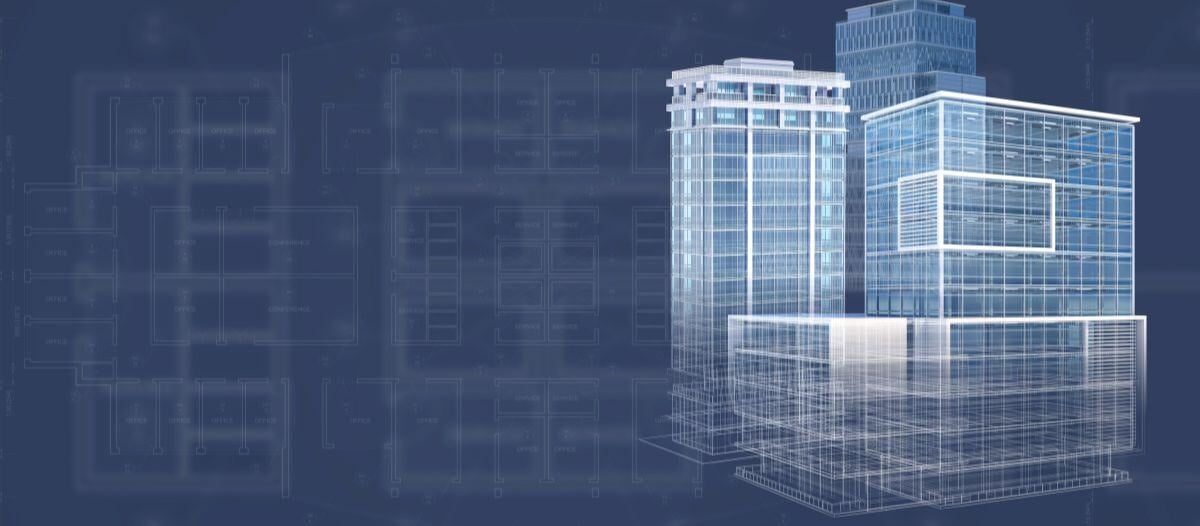Doing More with Less
How FM software drives efficiency

Across all industries, facility management teams face mounting workloads. Each day brings more work orders, reporting requests and data to be analyzed. At the same time, shrinking budgets and persistent understaffing make it challenging to keep up with rising business demands.
Three-quarters of FM practitioners cite shrinking budgets as their top concern, according to JLL Technologies’ State of FM Technology 2024 report. In many instances, budgetary concerns have led to hiring freezes, exacerbating an already difficult labor outlook. Approximately 42 percent of survey respondents describe their FM teams as understaffed— and the situation is not poised to improve soon. The ongoing mass retirement of aging FMs could create thousands of unfilled positions through the end of the decade.
Amid these resource constraints, many FM teams find that technology holds the potential to boost productivity and operational performance. FM software automation and innovative technologies offer solutions to accelerate work order completion, capture time- and cost-savings, ensure compliance, and boost both team and building performance.
Here are six ways FM practitioners can use FM software to do more with less.
1. Streamline work order management
According to the report, 55.7 percent of FMs saw increased work order volume in the last year. The perfect storm of rising workloads and limited resources puts pressure on FM teams to find efficiency gains. Unsurprisingly, 50 percent of respondents cited proactive work order management as their top software priority in 2024.
For companies that receive hundreds or thousands of work order requests per day, technology is the only way to manage the volume cost effectively. Work order management software enables FM teams to automate repetitive, labor-led tasks, freeing them up for higher-value work that requires greater problem solving and attention. It also allows stakeholders to check work order status for themselves, reducing call volume and improving customer satisfaction.
While automation may be the top expected outcome from work order management software, it is far from the only benefit FMs receive from their technology investment. Other expected outcomes include:
-
Analytics and insights to improve efficiency and FM performance
-
Ensuring work completion in compliance with regulations and service level agreements (SLAs)
-
Flexible, configurable workflows for specific industries or use cases
-
Productivity gains from technicians using a mobile app
2. Automate time-consuming tasks
Work order management is one of several tasks that benefit from automation. Automation exists today to accelerate 80 percent of FM workflows, from request assignment through invoice submission review, approval and payment.
Automating time-consuming tasks such as reporting and invoice processing can save FM teams significant expenses and thousands of hours annually. For example, one company saved US$787,000 in a single year by automating warranty tracking.
Reporting is one common task that can easily be scheduled and automated via a computerized maintenance management system (CMMS) integrated with a company’s accounting system.
The manager of store facilities a U.S- based food distributor discovered that using FM software to schedule, create and deliver reports eliminated the usual flurry of phone calls and questions they received from accounting at the end of every month, enabling the FM team to stay focused on FM priorities.
Integrating FM software with accounting systems can also streamline invoice processing. A large U.S. franchisee of fast-food restaurants automatically exports its 25,000 annual work orders to accounts payable, where 90 percent are approved and paid without human intervention.
Other areas primed for automation include managing a service provider network, refrigerant tracking, reviewing quotes from service providers and managing internal technicians.
3. Enable productivity from anywhere
To keep up with growing work order volumes, FM teams must be productive wherever they are, whether on the factory floor or a supermarket roof. A robust mobile app connected in real time to a CMMS database gives field technicians all the information they need at their fingertips.
When technicians in the field can access full asset maintenance histories, serial numbers, photos and more, they are better equipped to increase first-time fixes, on-time completion and compliance with SLAs.
Integrating augmented reality (AR) and virtual tagging into an FM app multiplies the effectiveness of field technicians. AR capabilities allow technicians to take advantage of predictive maintenance to effectively solve problems before they occur, avoiding downtime and unscheduled maintenance. Using AR to anticipate maintenance needs can enhance performance and efficiency while reducing costs.
4. Improve energy efficiency & sustainability
Most FM practitioners are concerned about reducing energy costs. This need is particularly acute for data centers and grocery stores, where energy costs are often 50 percent of total building expenses.
Intensifying corporate sustainability commitments are increasing the focus on reducing energy costs. Making rapid progress on sustainability goals often begins with reducing energy consumption. FM software can help organizations benchmark their facilities’ energy use, making it easy to identify areas for improvement.
Energy efficiency is the top sustainability priority for 69.4 percent of survey respondents because it is positioned to drive both savings and sustainability over the near and long term. Calculating the return on energy efficiency may also be easier than measuring other, deeper sustainability concepts, like embodied carbon footprints and circular economy policies.
Strategies that prioritize energy efficiency also strike a balance between the growing demand for energy-intensive facilities, like data centers, and the imperative to mitigate climate change.
Technology can also enhance sustainability in the workplace experience by making it easier to manage indoor air quality, lighting, temperature, occupancy, security, comfort and more. Smart buildings use technology to provide occupants with a safe and comfortable environment while making efficient and economical use of resources. Sensors and ongoing monitoring save energy by adjusting lights and HVAC settings in response to shifting building occupancy.
5. Balance preventive maintenance & budget constraints
Amid decreasing budgets, preventive maintenance (PM) takes on renewed importance. Declining capital budgets means existing equipment must be kept in service longer. PM extends asset life, increases performance and safeguards uptime — all critical when replacement funds are limited. It also contributes to desired environmental benefits since well-maintained equipment uses less energy.
Ironically, some organizations pull back on preventive maintenance when facing budget cuts, but this leads to more reactive repairs, which are more expensive in the long run and take longer to complete. Technology can help streamline PM programs to create efficiencies.
Nearly one-third of FM practitioners cite automated PM scheduling as the top outcome they expect from asset management software. A robust software system lets FM teams easily set up and manage PM schedules and provide insights for optimal PM frequency. FMs also find that asset management software delivers these additional outcomes:
-
Asset life cycle insights and recommendations for capital asset replacement
-
Business intelligence (BI) for accurate budgets and optimized OpEx/CapEx
-
Ability to capture comprehensive, real-time data across all facilities
-
Actionable intelligence for identifying expensive assets and facilities
Overall, asset management software produces insights that empower FM teams with a preparedness mindset for the near and long term, benefiting all stakeholders.
6. Uncover insights with new technologies
As artificial intelligence (AI) and other innovative technologies mature, they promise to accelerate the path from data to insights to action. AI enables FM leaders to rapidly glean insights from thousands of data points and make real-time changes that impact building performance and efficiency. This will be crucial for combating industry-wide understaffing and meeting growing expectations for tech-savvy FMs.
AI and BI are already proving their value by capturing and presenting FM metrics that matter, like identifying maintenance-heavy assets and buildings and revealing high- and low-performing technicians and service providers.
While AI generates significant interest, many FM teams are still in the exploratory phase. Only 10.4 percent of survey respondents already use AI in their FM operations. However, 59.1 percent say they have no AI strategy yet but are interested in learning more.
This wait-and-see approach reflects the typical adoption curve for FM technology. Given the mandate for facility managers to focus on saving money, new technologies must prove they can deliver a positive ROI or adequate time/cost savings before adoption gathers speed.
One thing is clear: employers have greater expectations for tech skills in their FM team members. As new tools transform and disrupt FM jobs, advancing technology may help workers prepare for the new reality. Generative AI offers the ability to use natural language with chatbots trained in FM jargon and best practices, which can make new skills easier to acquire and accelerate the path to tech competency.
Embracing technology to do more with less
Facility management teams must leverage software automation and emerging technologies to counteract understaffing, budget constraints and increasing workloads. By focusing on core FM functions, embracing automation and strategically implementing preventive maintenance, organizations can drive efficiency gains and operational improvements. As the FM landscape evolves, staying current with technology trends will be essential for success.

Tim Bernardez is a global technology executive known for successfully bringing emergent technologies to market to improve commercial real estate space. He is the global lead for workplace management technologies for global real estate services company JLL and works to connect clients with best-in-class commercial real estate management technologies, including Corrigo, CorrigoPro, Corrigo for Data Centers, OneSource, FM assistant, Envio, JLL Marketplace, VergeSense and Carbon Pathfinder.
Read more on Project Management , Technology and Emerging Topics
Explore All FMJ Topics









